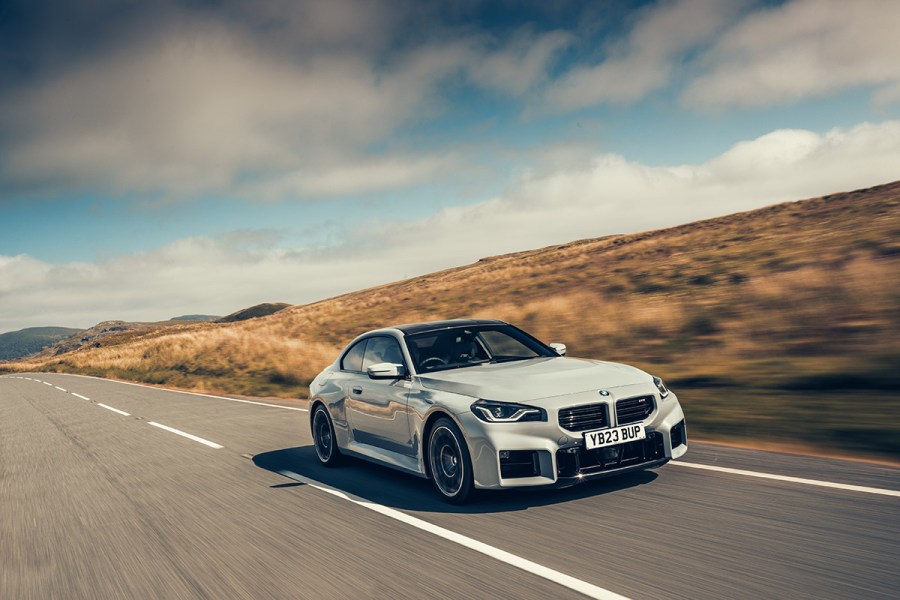It feels as if this moment with the BMW M2 G87 has been a very long time coming. The G42 2 Series Coupé was revealed in July 2021, and even before I drove the M240i in November of that year, the rumors and talk of a new BMW M2 were swirling around. Tantalizingly, BMW brought mw along to the Salzburgring racetrack in Austria in May last year for an afternoon of flat-out laps in a pre-production prototype, and the signs were good. And yet, it was another five months before the wraps were finally removed from BMW M’s new junior, the G87. Given how impressive the previous-gen M2 was, we even placed it in the best used cars to buy right now, the G87 generation has a lot to live up to.
For various reasons, it has taken me a while to get my hands on the new BMW M2 G87 in its finished format. Despite the long wait, it’s quite a moment to see it in person for the first time. It certainly does not disappoint.
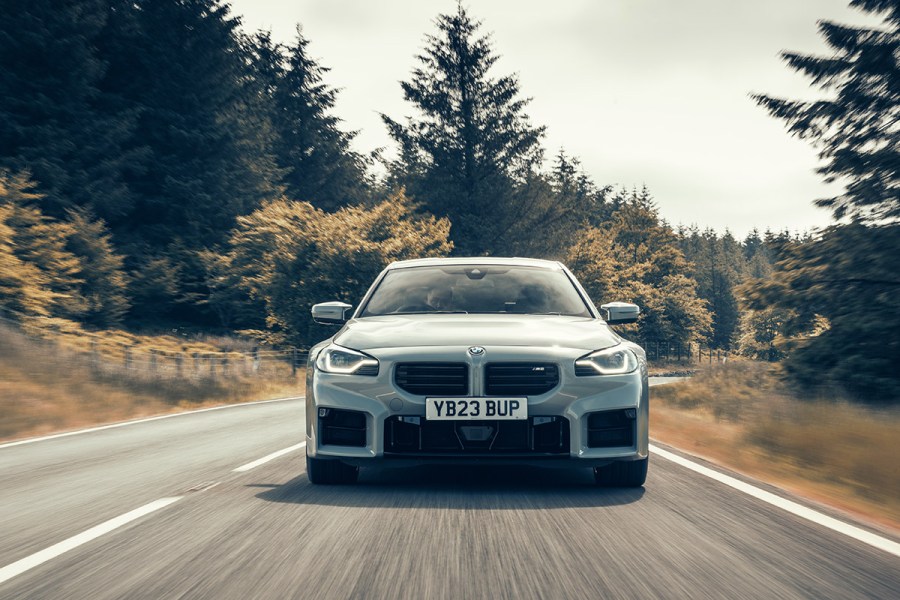
Muscular stance
The stance and proportions don’t fully translate to flat photographs, but the fact that the BMW M2 G87 has the same track widths as the M4 on a wheelbase that’s 110mm shorter says it all. The word ‘squat’ has been waiting for this moment. BMW M’s designers have made the most of the dimensions to give the M2 a suitably muscular body to distance it from the rest of the – not-exactly-effeminate – 2 Series Coupé lineup. The beefy bodywork around the front and rear wings works with the new side sills and more prominent boot spoiler to give the M2 a suitably M profile, but the detailing front and rear isn’t to all tastes.
A completely new nose was added, supposedly in the name of engine cooling, though the frameless take on the kidney grille – and oversized rectangular air intakes below – appears to have been drawn with thick crayons. A similar approach was employed at the rear, and though it’s a little busy back there, I’d suggest that it’s more successful, giving the G87 M2 real brawniness, emphasized by the traditional quad-exhaust setup. Complementing that is an exquisite carbon-fiber roof (standard-fit in the UK), special mirror caps and moody dark alloy wheels measuring 19” up front and 20” at the back. In short, all the design hallmarks of a proper M car are present and correct.
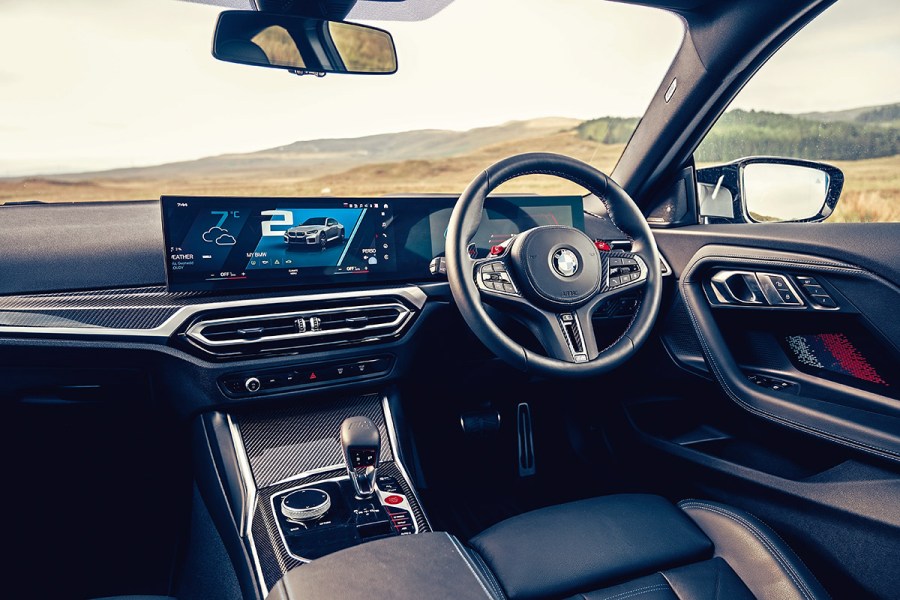
What’s the new BMW M2 G87 like inside?
Swing open the frameless doors, and it’s clear this theme continues into the four-seat cabin. In terms of seating, the standard black M Sport seats in Merino leather with M stripes are lovely looking, comfortable, heated and adjustable every which way. However… the optional M Carbon Bucket seats – as offered in the M3 and M4 – are utterly glorious to behold, lighter and far more comfortable on a long journey than you’d expect them to be. Shame they’re only available as part of the £9095 M Race Track package.
In front of the driver, thankfully – and not to be taken for granted – is a perfectly round steering wheel. As is BMW M’s way, it’s a fraction too thick of a rim for our liking, but it’s still lovely to hold thanks to sculpting in the right places, and it looks good with its M stitching and carbon fiber detailing. The bright red M1 and M2 buttons are a mere thumb-flex away, and there’s a pair of slender carbon-fiber gear change paddles behind as well. We’d rather actual metal for these from a tactility point of view, but that’s nitpicking.
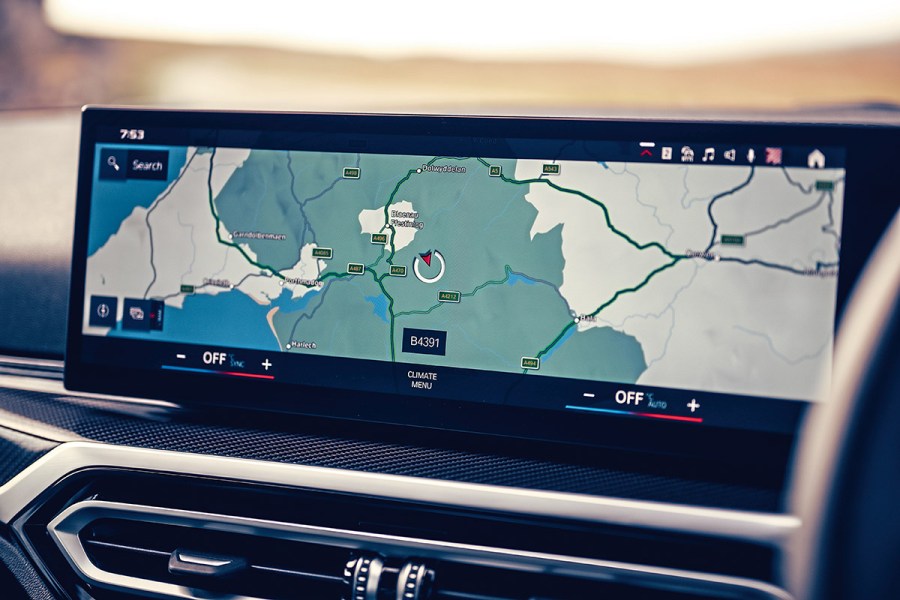
Curved display
Dominating the dashboard is the Curved Display we’re used to seeing in every new BMW now, featuring 12.3” instrumentation and a 14.9” touchscreen for the infotainment. It’s all loaded to the gunwales with features and connectivity that an owner can take their time to get used to, and, for the most part, it works very well. We do wish that separate air conditioning and heater controls were retained as physical switchgear, but most car makers have succumbed to the trend of moving them into the touchscreen menu. Thankfully, the basic functions for the climate control always appear at the base of the central display. The BMW M2 G87 gets M-specific graphics and menu items, of course, some of which we’ll get to in a moment.
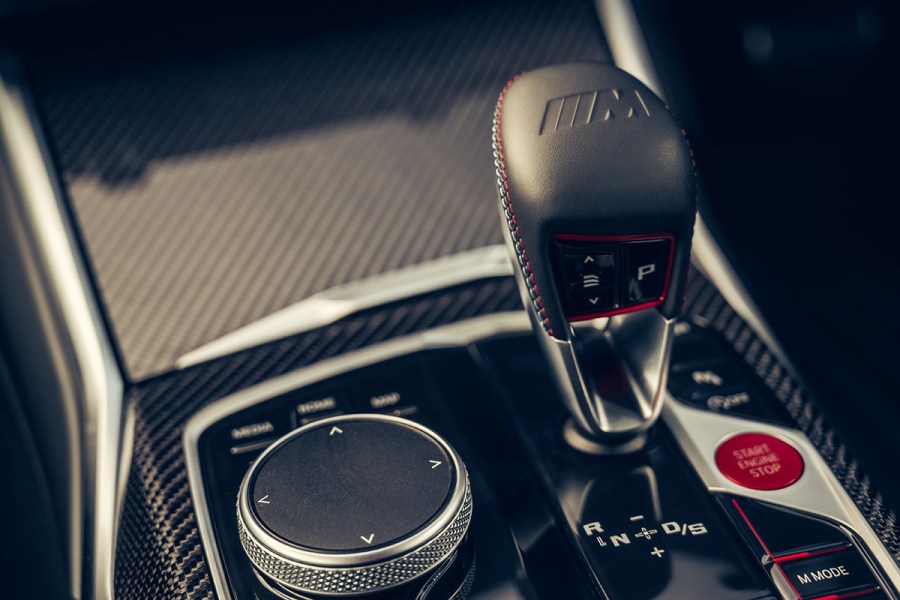
Centre console upgrade
The G87 M2 also gets a suitably upgraded center console based on that of the 2 Series Coupé, though it retains the rotary controller for the iDrive system, which we’re glad to see. Next to that is a tactile gear lever (this test car featured the more popular automatic gearbox, though a six-speed manual is also available) with the Drivelogic toggle switch built into it. Clustered around that are a few key buttons allowing the driver to alter the car’s characteristics and the impossible-to-ignore, fire-engine-red engine-start button.
Press that, and the engine sparks into life with a suitable bark before settling down into a restrained idle. Some might find it too restrained in its default settings. It undoubtedly has a more rousing note if you have the sports exhaust button pressed and the engine at its Sport Plus level. These days, the myriad BMW M driving settings are altered via the touchscreen, though it’s a cinch to do on the move thanks to the simple Setup button to the right of the gear lever. Press that, and all the options are presented on the display for you to pick and choose from – and you can program your favorite groups of settings into two separate modes for quick use via those M1/M2 buttons on the steering wheel.
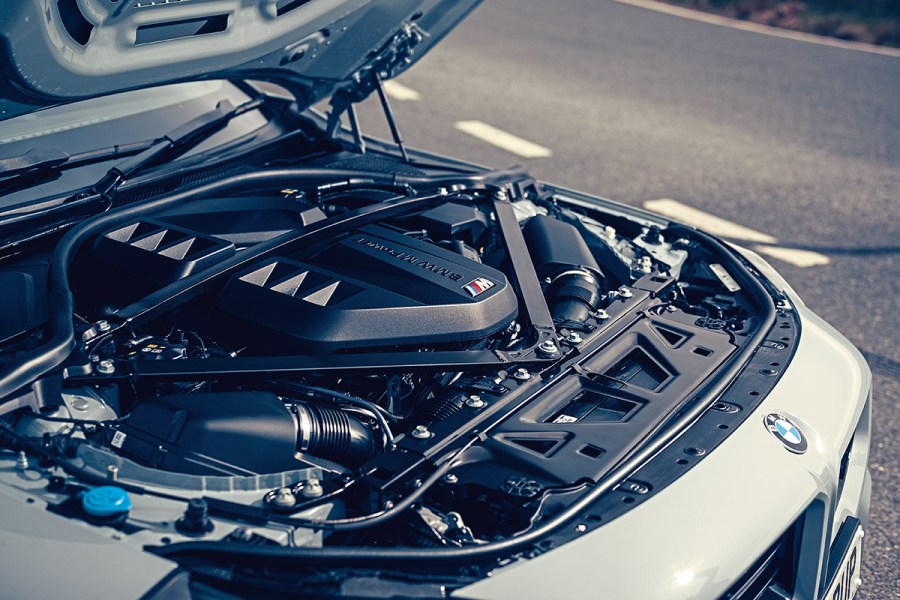
Engine modes
The engine can be altered through Efficient, Sport and Sport Plus options, which is self-explanatory. The BMW M2 G87 feels – and sounds – notably friskier in the Sport settings, though the Sport Plus mode comes with a razor-sharp response to accelerator inputs that makes stop-start driving in traffic tiresome. We’d use it everywhere else, though. Under the bonnet is an S58 straight-six, differing only a little from that in the M3 and M4. Like in those, the M2’s unit gets twin mono-scroll turbochargers, high-pressure direct fuel injection, Valvetronic, Double-Vanos variable camshaft timing, and forged big-end components to withstand all the stress.
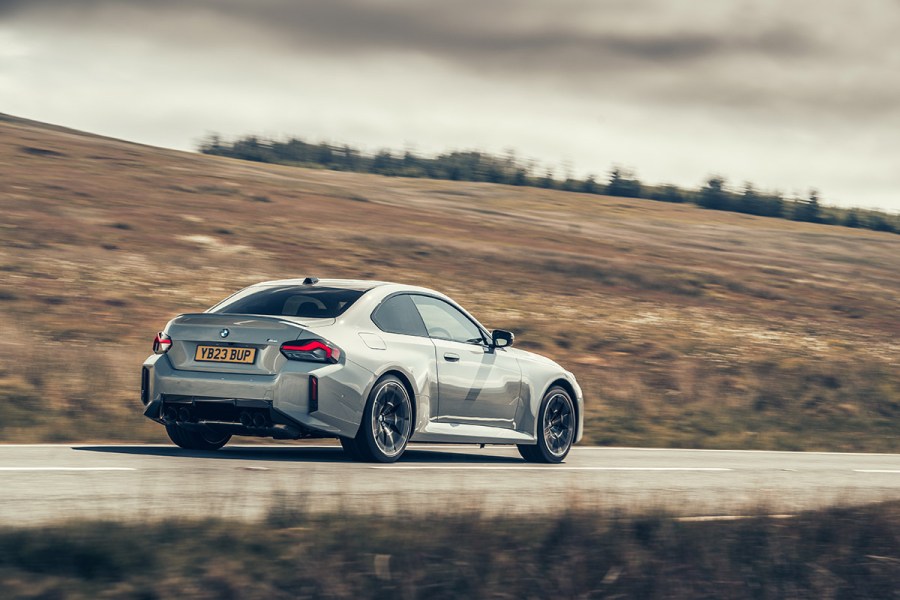
BMW M2 G87 performance figures
BMW quotes maximum outputs of 460hp at 6250rpm and 405lb ft of torque at 2650-5870rpm. The engine speeds those peaks are produced at is important to understand the delivery of this unit’s performance. It’s breathtakingly rapid if you rev it out to the redline, something you’ll want to do to hear the straight-six in all its glory. And yet, keep it in that torque sweet spot in the midrange, and it’s devastatingly effective at gathering pace at any opportunity you give it. The raw data may suggest that the M3 and M4 are a little faster, but, on the road, there’s nothing between them in reality.
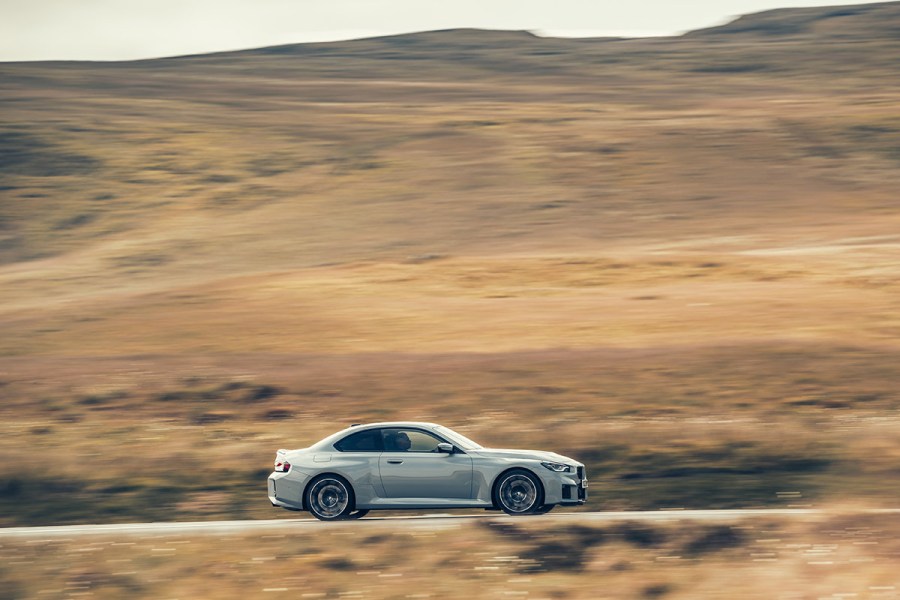
Driving impressions
For the chassis, you choose from the default Comfort level, Sport and Sport Plus. Though the electromagnetically controlled valves in the dampers (Adaptive M suspension is fitted as standard) allow fully variable damping forces on a per-wheel basis on the move, their characteristics are mapped to the selected mode – and there’s a notable difference between the three levels.
Saying that, this is an M car, so the most comfortable end of the spectrum doesn’t really live up to its billing when the road surface is poor, despite the noticeable reduction in body control. In Sport and Sport Plus modes, the body control is astounding, though you’ll want a glass-smooth road or track to make the most of the firmest setting. A huge amount of structural work has gone on under the body to allow the suspension to work as designed, and the end result is a car that moves all apiece and never rattles or feels ‘floppy’ even over particularly pockmarked pavement.
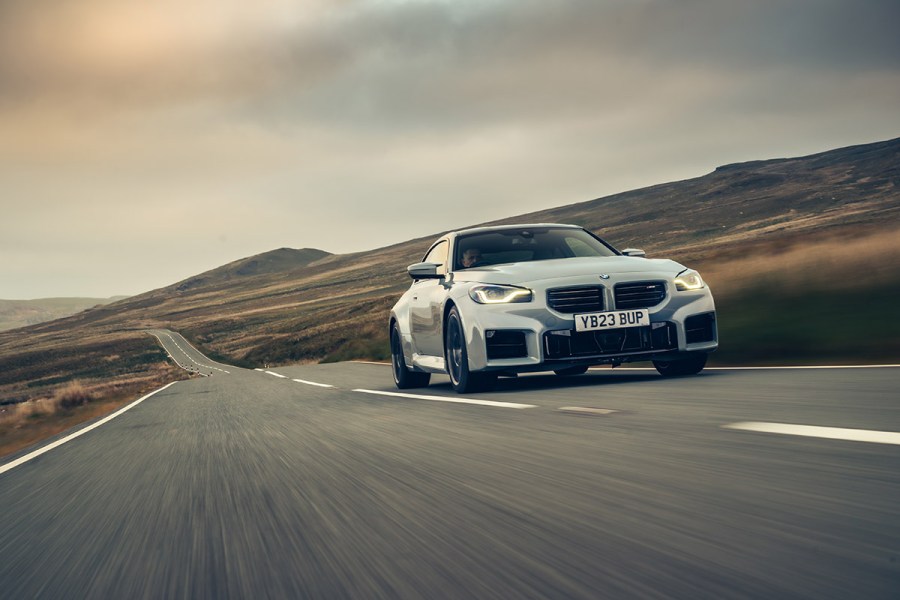
Aiding and abetting the excellent damping is M Servotronic steering. This mixes speed-sensitive assistance with a variable-ratio steering rack. The latter helps prevent the M2 from feeling twitchy around the straight-ahead while eagerly turning into sharp bends the more you turn the steering wheel.
There are Comfort and Sport settings for the assistance, and we actually prefer the lighter touch of the default Comfort mode. Either way, there’s impressive communication with what’s going on at road level through the steering wheel rim, as your fingertips receive a textured map of the surface underneath the tires. The flip side is that the steering can be corrupted by camber changes, but at least you’re always informed what’s going on.
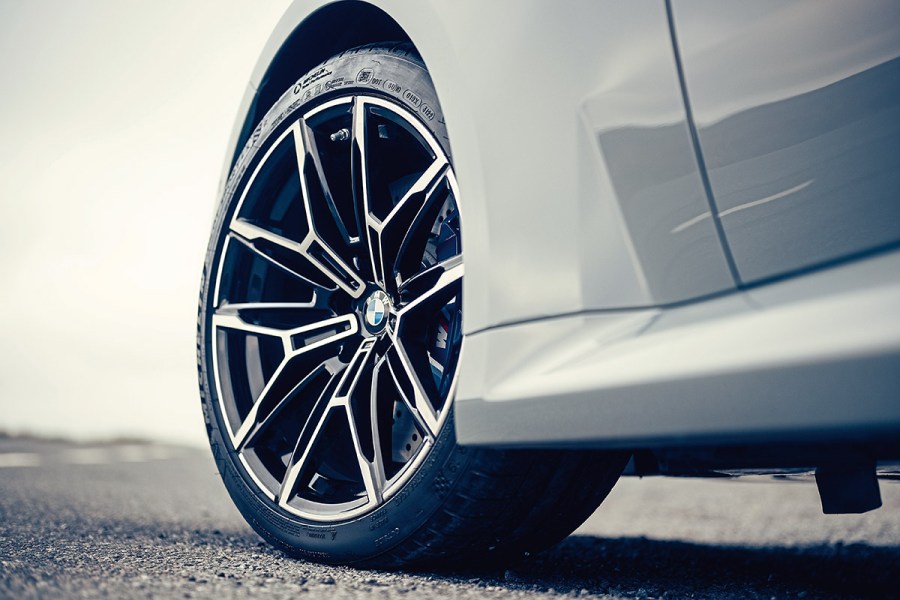
Integrated braking system
BMW’s so-called integrated braking system may be a technical marvel allowing the driver to choose from two different brake-feel settings, but it doesn’t offer up quite as much feedback through the pedal as fully hydraulic systems of old in my opinion, and there’s little difference between the Comfort and Sport settings. Nonetheless, there’s always huge stopping power on tap from the six-piston, fixed-caliper, 380mm front and single-piston, floating-caliper, 370mm rear setup using M Compound discs. Carbon ceramics are not offered, though buyers can choose from blue or red calipers.
Under all the above settings on the screen is a slider for the M Traction Control. That’s only accessible if you turn the Dynamic Stability Control (DSC) off fully. Press the DSC button, and another menu pops up on the screen, allowing the option to use the mid-setting called M Dynamic Mode instead of turning it off completely. This setting is excellent on the road, allowing a little more slip at the rear before the electronics step in. Actually, in the dry, you need to be trying very hard indeed for that to happen, such is the traction from the combination of wide tires, wide track and the car’s inherent 50:50 weight distribution.
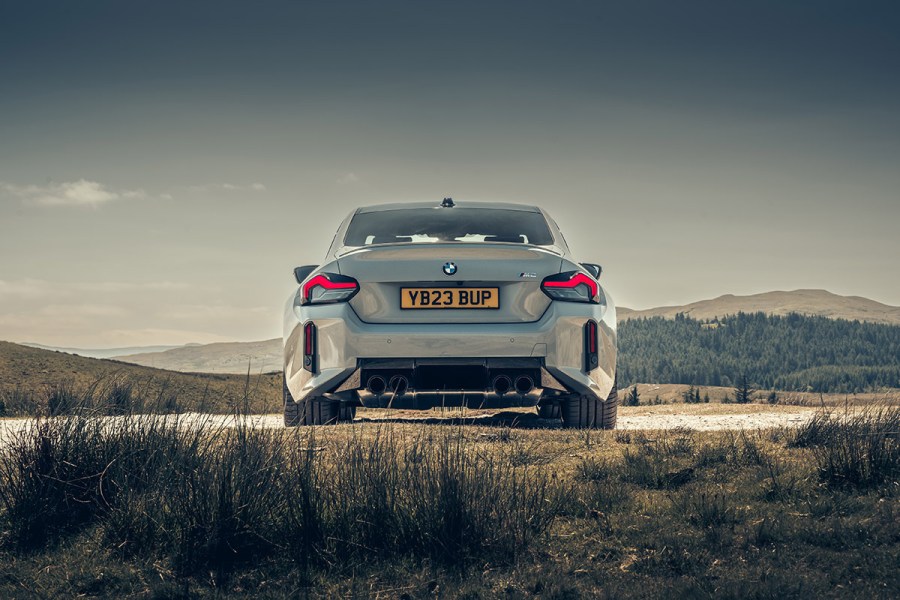
Comparisons with the previous BMW M2
The new M2’s rock-solid stability and composure separates it from its predecessor, a car that was always a little nervy – and probably all the more exciting at road-legal speeds because of that. Is the new one too grown up? That’s one point of view certainly, but it has resulted in a far more capable chassis overall, allowing experienced drivers to exploit it to the full at higher speeds without alienating us mere mortals behind the wheel. Some will lament the loss of the lower-speed playfulness of the old car, but there’s more to the new one for sure. On the subject of playing, the M2 carries over the M3/M4’s silly M Drift Analyzer, and yes, I’m only calling it silly because I couldn’t manage a five-star rating…
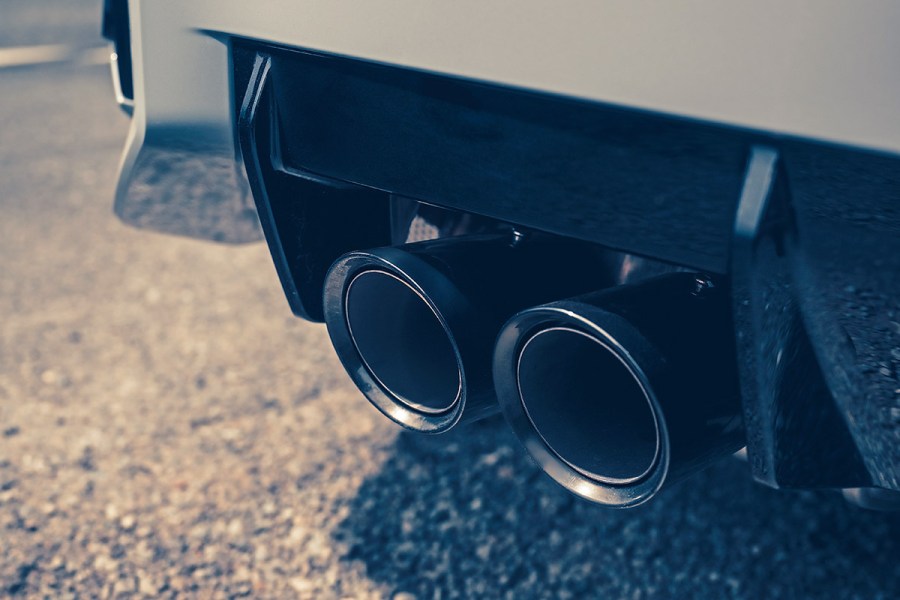
Transmission choices
As mentioned earlier, most BMW M buyers opt for the automatic option these days, though the BMW M2 G87 can be had with a six-speed manual gearbox, too. It’s the more expensive model, commanding a £1200 premium over the standard £64,890 auto, while the manual is also marginally less economical according to the official numbers. Not that I’d put too much belief in them if you’re driving the car as intended. I averaged about 19mpg.
The manual version takes two-tenths of a second longer (at 4.3 seconds) to get to 62mph from rest and a good deal more skill to manage that of course, which is the reason you’d opt for the manual gearbox in the first place. It has something called Gear Shift Assistant, too, to help with rev-matching on down-shifts, which works well enough, but those who want to further their own ability in that regard can switch the feature off.
The eight-speed M Steptronic gearbox is a torque converter item, as used throughout most of the M lineup now, replacing the double-clutch item of old. It’s much smoother in operation, perhaps with a smidgen less interaction. The Drivelogic system allows three different levels of operation, affecting shift speed and timing of the gear changes, and this applies whether the system is in the default automatic setting, or you’ve gone for manual control. Commendably, when the transmission is in its manual mode, it won’t ever change up for you, meaning you can bounce the engine off (a quite smooth) rev limiter if you so wish. Regular track drivers will like that, as it means no unexpected gear changes halfway through a corner.
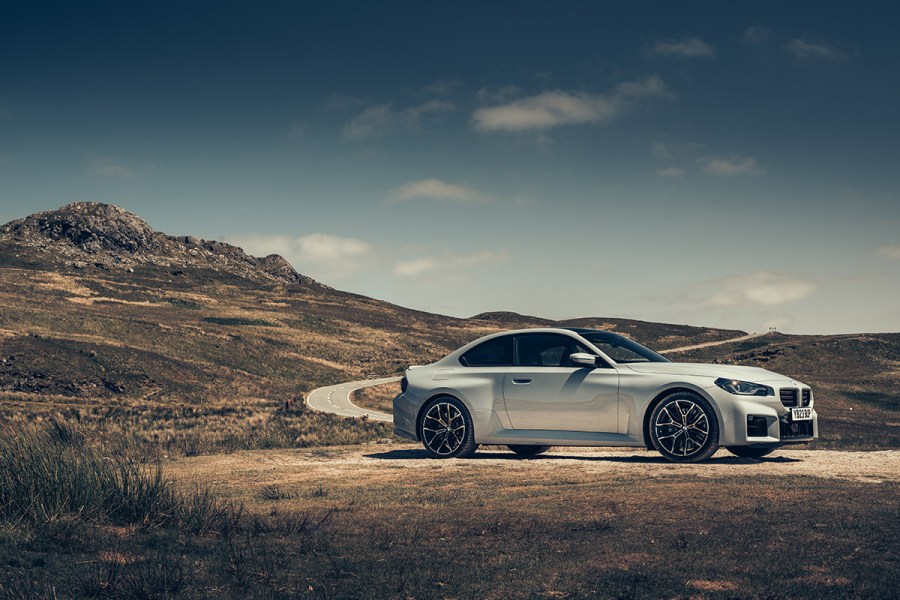
BMW M2 G87 Verdict
While I didn’t have the opportunity to bring this particular test vehicle to a race circuit, our experience last year in the prototype revealed that is where the M2’s extended capability can truly be felt. The on-road stability translates into rock-solid dependability on the track, meaning you can really trust the traction and body control, not to mention composure during heavy braking, lap after lap. Through all this, you can feel the excellent Active M Differential dividing up the engine output between the rear wheels to enhance traction on the exit of tighter corners and help with getting turned into the apex elsewhere.
In short, the BMW M2 G87 lives up to the hype and the long wait.
Words: Shane O’ Donoghue.

